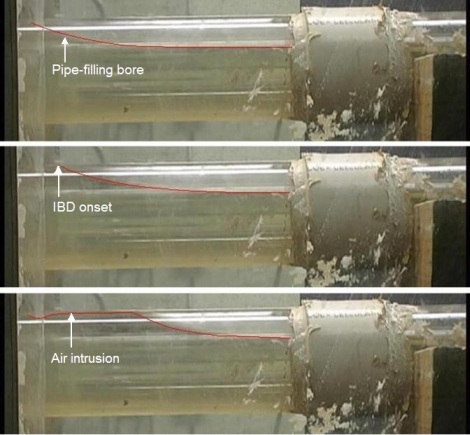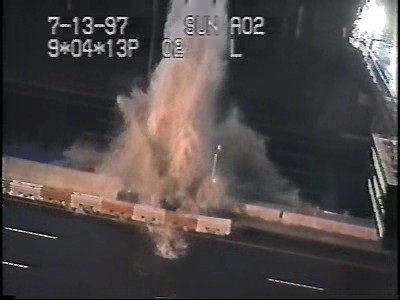Research Interests
-
Description of extreme flow
events in hydraulic systems

Figure 1 - Interface breakdown phenomena caused by air pressurization during rapid filling of closed pipes

- Modeling of the transition between pressurized and free surface flows

Figure 3 - Comparison between TPA model and the traditional Preissmann slot model to simulate flow regime transition (aka mixed flows) in closed pipelines
- Watershed hydrology monitoring and modeling
Investigations involving field and numerical modeling of surface-groundwater processes in the headwaters of watershed, including effects of highway traffic and rapid changes in water quality parameters. Tools that we have been using include EPA SWMM5 and GSSHA.
- Sediment-laden multiphase flows representation in construction site runoff
Investigations to improve effectiveness of sediment capture in sediment basins in construction sites, involving large scale testing and CFD modeling. Our work have now included the mechanisms for resuspension of sediments in construction site sediment basins, and developing countermeasures to such occurrences.
- Stormwater modeling and optimization
We are interested in applications that involve improving the accuracy of stormwate modeling, as well cost optimization of these systems. Research has been focused in developing user-friendly tools to aid in these tasks for various types of stormwater management practices.
- Study of Gravity Currents
Experimental and numerical investigations of gravity currents, assessment of during the advance of salinity-driven currents and for stratified flows. Use of shallow water equation models to quickly simulate the advance of gravity currents.


